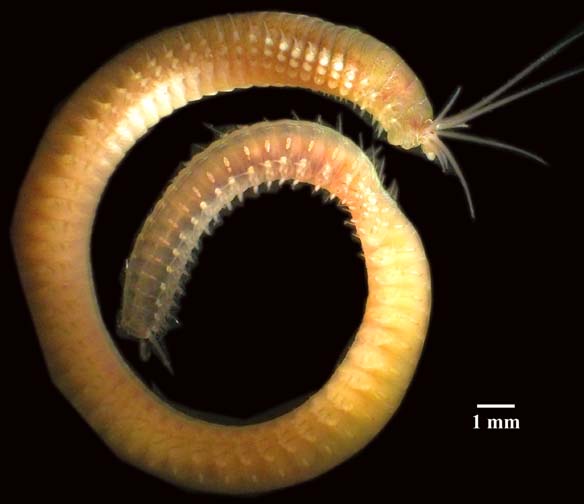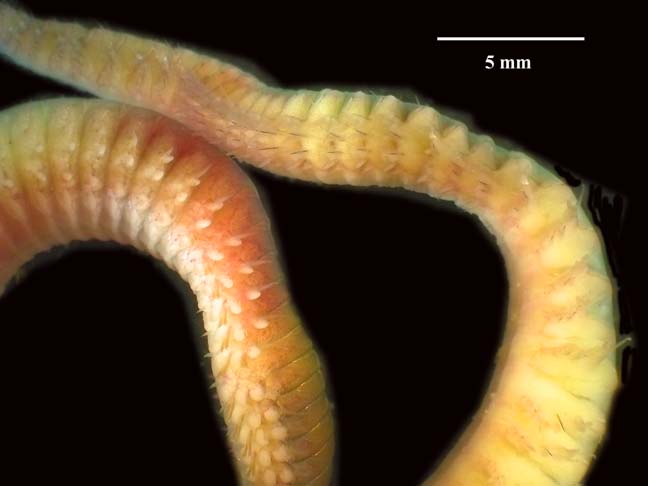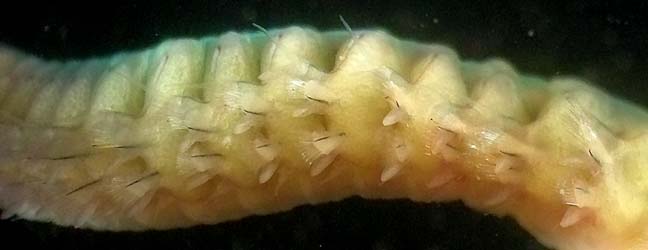California Academy of Sciences
Home What is a Settling Plate? Settling Plate Organisms Participating Schools Get Involved!
Platynereis bicanaliculata (Baird, 1863) - Native
This native polychaete is distinguishable from other San Francisco Bay nereids by its greatly elongate tentacular cirri and brown-tipped hooked setae in the parapodia throughout the length of its body (seen in the fourth segment from the right in the last photo). Platynereis bicanaliculata build thin-walled tubes in rocky areas or among eelgrass and algal holdfasts, but can often be found from central San Francisco Bay to southern San Pablo Bay among the fouling communities of marina docks and subtidally in soft muddy bottom habitats and algal clumps.
These errant polychaetes are herbivores, feeding on macroalgae as adults and on diatoms as juveniles. They have eversible probosci with chitinous jaws at the tips that are used for tearing off pieces of algal tissue.
Breeding
adults form heteronereids (see Nereis
and Neanthes) and northern populations
of the species are known to spawn in summer during the full or new moon. The
presence of gravid females triggers males to release sperm and the
presence of sperm in the water triggers the release of eggs by the females.
The photographs below are of a female heteronereid; upon close inspection,
semi-round white eggs are visible within the body cavity. After gametes are
shed through papillae in the posterior region of the heteronereid, external
fertilization occurs in the water column. The trochophore larvae are
pelagic and non-feeding for three to four weeks, after which juveniles
with few segments settle and begin to feed among the benthos.




